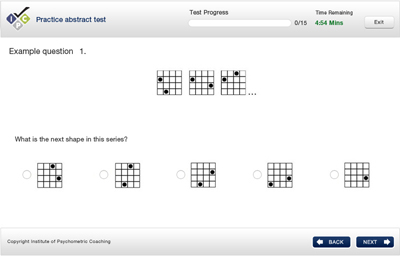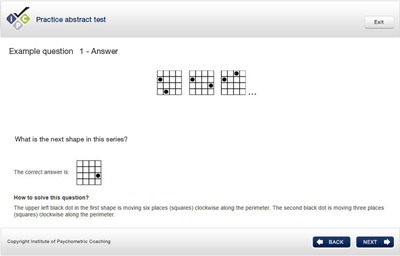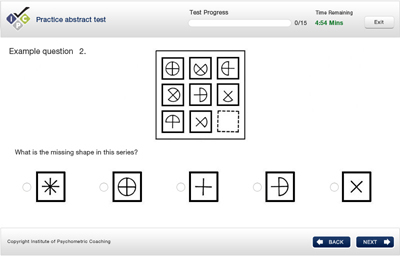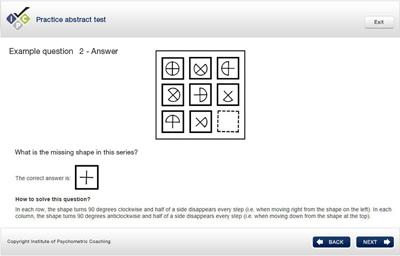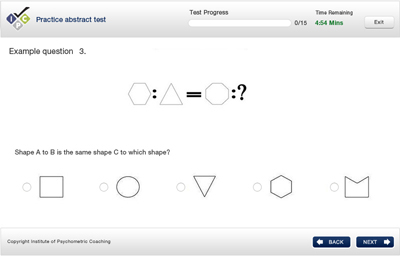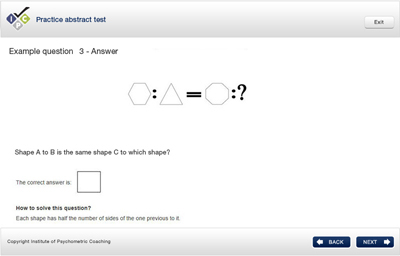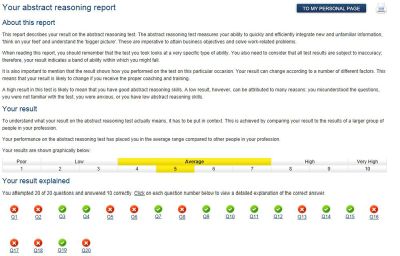What to expect in your abstract aptitude test or abstract reasoning test
In an abstract reasoning test question, you are given a group or a series of shapes that are defined based on one or several logical rules. For example:

In the above example, there are three shapes that make a sequential series (i.e. one shape changes or evolves to the next one). The rule in this series is that the black dots move clockwise along the perimeter one place at a time.
Each group or series is followed by a question, which typically requires you to find the missing shape or the next shape based on the series’ rules and patterns. Each question has between four and five optional answers. Your task is to identify the logical rules and patterns that define the series of shapes and then decide which is the correct answer (i.e. the missing shape in the series, the odd one out, or the next shape in the series).
The abstract reasoning test is timed and, although different tests may have different time limits, you should typically expect to be given approximately 25– 30 seconds per question. The abstract reasoning test is designed so only 1% to 5% of test-takers can correctly answer all questions within the time limit, with the most difficult questions placed typically at the end of the test.
See below some abstract aptitude practice test questions examples. You can click on the image to enlarge.


